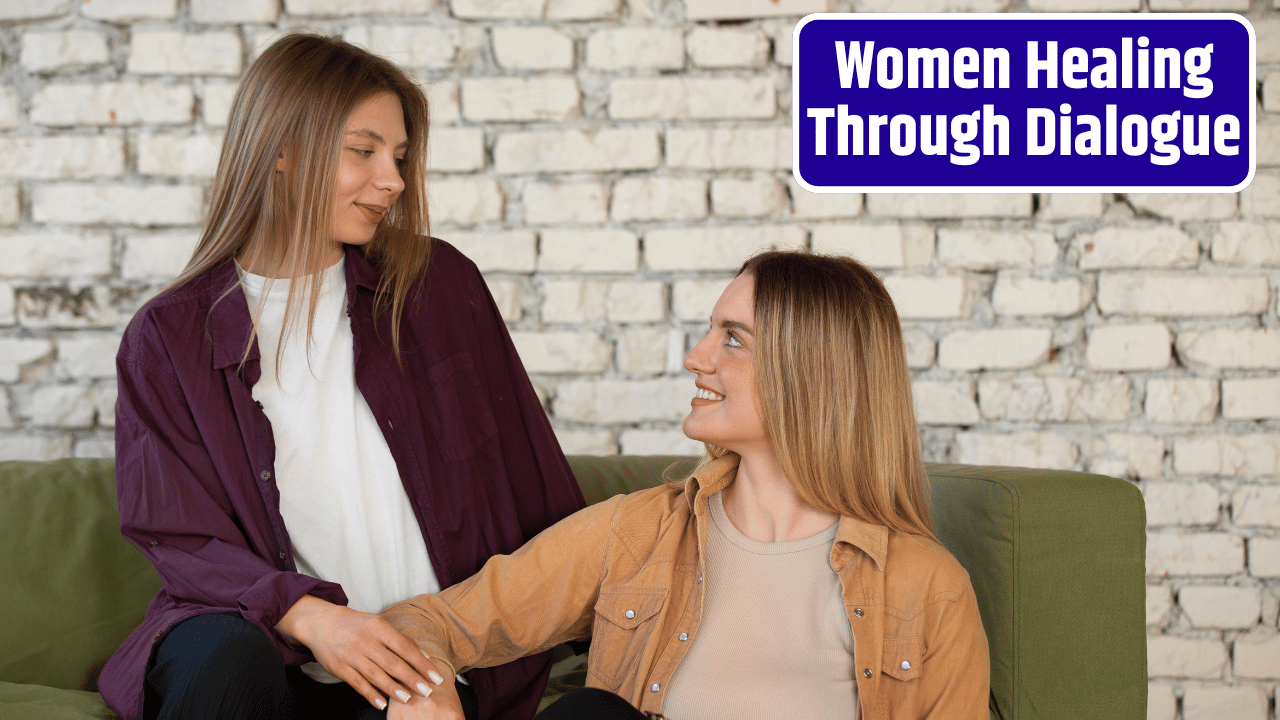Picture this: A burned-down school. A split village. Generations turned against each other by war, propaganda, or both. The military’s gone. The journalists left. But guess who’s still there?
The women.
They’re the ones rebuilding—not just houses, but trust. Setting up informal councils. Hosting community gatherings. Sitting across from the same people who once pointed rifles at them and saying, “We have to talk.”
Conflict recovery doesn’t start with a treaty or a UN resolution. It starts with a conversation. And more often than not, it’s women who begin it.
Table of Contents
Why Dialogue Matters More Than You Think
In post-conflict zones, the violence might stop, but the wounds? Those stay.
And you can’t heal a nation with silence.
Dialogue—the kind that unpacks trauma, acknowledges wrongdoing, and dares to dream of co-existence—isn’t just touchy-feely peace work. It’s infrastructure. Emotional infrastructure. And without it, no amount of rebuilding will hold.
That’s where women step in. They’re the bridge. Not because they’re naturally nurturing (please). But because they’re often:
- Trusted in their communities
- Embedded in both formal and informal networks
- Experienced in mediating family, tribal, and social tensions
- Driven by a fierce determination to make sure their kids never see another war
Where It’s Already Happening
Let’s stop pretending this is theoretical. Women are doing this right now, often with little recognition and even less funding.
Rwanda
After the 1994 genocide, it was women’s cooperatives that facilitated dialogue between survivors and perpetrators. They didn’t just talk—they listened, built businesses together, and reknit a society shredded by horror.
Colombia
Women’s organizations in rural areas led community reconciliation efforts post-conflict, often addressing sexual violence and land rights—topics the formal peace deal barely touched.
Yemen
Despite ongoing chaos, women-led “dialogue circles” have emerged in places like Taiz and Sana’a, opening spaces where youth, elders, and ex-combatants can speak without fear.
Bosnia & Herzegovina
In the aftermath of ethnic conflict, women formed interethnic associations that continue to work across divides, helping their communities process grief, rebuild memory, and resist renewed nationalism.
Dialogue Isn’t Soft—It’s Strategic
Let’s get one thing clear: dialogue work isn’t some kumbaya circle. It’s political. Risky. And often dangerous.
Women peacemakers face harassment, arrest, and in some regions, assassination. Why? Because rebuilding trust challenges power structures built on fear and division.
But they keep going.
They host truth-telling sessions.
They design trauma-healing workshops.
They bridge religious, ethnic, and generational divides.
And they do it without tanks, titles, or televised summits.
The Global Disconnect: Who Gets Funded, Who Gets Ignored
Here’s the maddening part. The same women risking their lives to build social cohesion? They’re running on fumes.
| Category | % of Global Peace Funding (2024) |
|---|---|
| Women-led local peace initiatives | 0.8% |
| Elite diplomatic processes | 65%+ |
| Military/security programs | 20–25% |
So we keep investing in hard power and top-down diplomacy, while starving the efforts that actually hold communities together.
That’s not just unfair—it’s ineffective.
How to Actually Support Women-Led Dialogue
We’ve talked about this before, but let’s break it down again—real support looks like:
| Need | Solution |
|---|---|
| Recognition | Include grassroots women leaders in formal recovery planning |
| Resources | Fund their initiatives directly, without bureaucratic gatekeeping |
| Protection | Provide security for women peacebuilders and mediators |
| Platform | Amplify their voices in global forums—not as victims, but experts |
| Training & Networks | Support regional women’s dialogue networks and cross-border collaboration |
The work is happening. It just needs scale. And respect.
Why It Works: Women Speak From the Middle
In fractured communities, people don’t trust institutions. They trust people. And women, especially those embedded in community life—mothers, teachers, midwives, market vendors—carry legitimacy.
They’re seen as less threatening, more empathetic, and—this is key—more neutral. That means they can open doors that formal negotiators can’t.
And here’s the wildest part: dialogue led by women tends to be more inclusive. They bring in youth. The disabled. Ethnic minorities. Former combatants. Single mothers. They make the table bigger, not smaller.
Peace isn’t just an absence of war.
It’s the presence of dialogue.
Of memory, justice, forgiveness, and forward motion.
And the ones most committed to that kind of peace?
They’re usually not on your TV screen.
They’re in your town hall, your schoolroom, your broken-down clinic.
They’re sitting across from an old enemy and saying, “Let’s talk.”
FAQs
Is women-led dialogue really more effective than formal diplomacy?
It’s more relational—and that’s what makes peace stick. Dialogue builds trust where deals alone can’t.
Why is this work so underfunded?
Traditional donors still prioritize state actors, top-down approaches, and “hard” security. Grassroots, gendered work often gets dismissed as “soft” or local.
How can this scale globally?
Through investment in women-led networks, regional dialogue platforms, and integration into national recovery plans.














